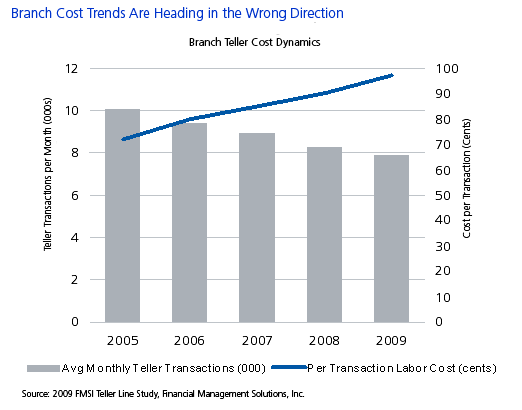Branch Banking in a Multichannel World, Part II: The Many Faces of Change
Abstract
There is no blueprint for the branch of the future. A variety of models are emerging, but common elements of technology, culture, organization, and physical design are shared by early movers.
In a new report, Branch Banking in a Multichannel World Part II, Celent distills multiple, varied "future branch" initiatives throughout North America and Europe into common elements that lead to successful outcomes. The report details multiple observations among financial institutions having highly evolved branch channels, among them:
- Branch channel evolution is a journey, not a destination. Most financial institutions "get there" through a manageable series of incremental initiatives with trial and error along the way. Few transform the branch network in one fell swoop.
- Despite the diversity of outcomes, Celent observes a well-worn path chosen by financial institutions with highly evolved branch networks.
- Although important, physical branch design, in Celent's view, is the least impactful in producing highly effective and efficient channel delivery. Exotic designs are obvious, but their justification is not.
- Financial institutions with highly evolved branch channels are typically not "branch zealots" with inflated views of the importance of branches. Instead, many of these same institutions had highly evolved and competitive "alternative" channels as well, and operate from a decidedly multichannel playbook. Bob Meara, Senior Analyst with Celent’s Banking Group and author of the report. "However, the changing regulatory, economic, social and technological environment has created an imperative for branch channel evolution. Said simply, the branch isn’t dead - just different."
The report contends that branch channel cost trends are headed in the wrong direction. Most financial institutions won’t be able to avoid taking action for long. The answer isn’t scuttling branches but rather transforming them. This report shows how it is being done.
Despite declining teller transaction volumes, highly evolved branch designs typically employ transaction automation technologies in addition to CRM. Doing so improves sales and customer service through reducing administrative activity. In that sense, sales/service and transaction automation could be considered two sides of the same coin. Both are vital.
"Despite the growing activity in alternative distribution channels, the branch will remain a relevant and strategically important delivery channel for the foreseeable future," says

The report begins with a brief discussion of the "new normal" in retail banking: the factors driving the acceleration of branch channel transformation and their likely persistence. The report then examines the diversity of outcomes among financial institutions with highly evolved branch networks. From there, the report distills a taxonomy of future branch initiatives, separating physical design, technology and cultural and organizational aspects. Finally, the report examines the relatively well-worn path taken among otherwise diverse financial institutions in their quest to transform the branch channel to new levels of efficiency and effectiveness.

